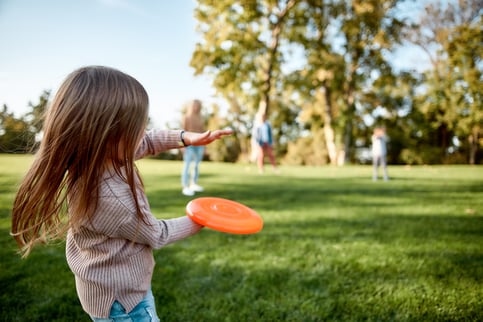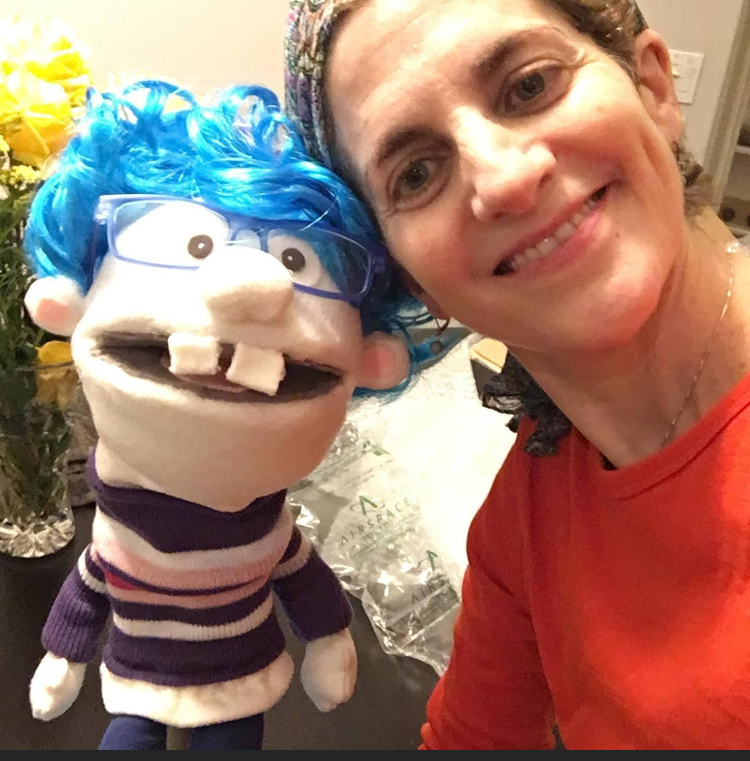Our Top Picks for Encouraging Gross Motor Skills for Autistic Children: Let the Great Outdoors Be Your Natural Playground!
Use these therapist-selected, parent and teacher-approved, and kid-tested ideas to help your autistic child continue to develop gross motor skills!
Spring has sprung! Tired of being inside? Spring is a great season to step outside with your autistic children and reap all the benefits of the great outdoors while also encouraging gross motor development. Not only will the sensory system come alive, stimulating more motor skills, but the outdoors provide a natural playground for developing gross motor, coordination, balance, and strength. Spring is an opportune time as the outdoors are simply a natural playground. If your child is walking, learning to walk, or ready for higher-level coordination activities, take a step outside and let the good times begin.
Just a couple of tips before we get started:
Look for Opportunities.
Don’t underestimate your own creativity or tools and props that might be lying around your yard or outdoor area. Balls, hoops, rakes, buckets, rocks, and tree limbs are just a few. Taking the opportunity to go outside can often be enough to get your child moving. Lawns and yards provide great opportunities for walking, running, or rolling up or downhill. A cardboard box can make a great sled on a dry grassy hill too!Patience Please.
Don’t give up. If your child doesn’t seem excited to be outside, be patient. Then just let nature take its course. Going outside as often as possible to enjoy whatever you choose to do is key. We’re not aiming for perfection, just consistency, and repetition. You might just have a yard helper, hiker, or biker on your hands before you know it. With that said, keep the mood light. This is a time for fun and enjoyment even if it involves a bit of preparation or hard, heavy work. Dress for Success.
Dress for Success.
Check the weather before you head outdoors. Lighter clothing combined with a jacket for cooler days or a hat, sunglasses, and sunscreen can make your outing last a bit longer. And don’t forget a water bottle too! Leave the Electronics Behind.
It’s easy to get caught up in answering emails or texts or posting while outside but if you want to make the most of this time, leave those electronics behind or turn them to silent so you can enjoy this time with your child. This will allow for better communication, attention, and a different experience than one that is interrupted by text notifications.
A few outdoor, gross motor tantalizing ideas:
These are our top picks for encouraging gross motor skills while enjoying the great outdoors. They have been therapist-selected, parent-approved and kid-tested!
1. Play a Game of Kickball.
You don’t even need to bring bases, just a ball. Your bases can be items you find outside but if you prefer, or your child needs more visual cues, you can purchase colored bases and floor spots or use poles with colored scarves or flags to mark the bases. You can even put a bell on each base to ring when your runner or walker gets to the base.
For younger children, you can place bases close together, and for older kids a bit farther apart. A flat grassy area is best for a fun game of kickball. But don’t worry too much about points or scoring if your child is not quite there. For some children, it’s just a matter of encouraging kicking and running around the bases. For children who are more aware, you can keep score. Well, what are you waiting for? Let the game begin!
2. Shoot the Hoops.
I love using a basketball during OT therapy. It’s tactile, brightly colored, and makes a nice bounce sound. You know your child well enough to know if that type of ball will work. You can also get a ball with fewer bumps, use a smooth kickball or one of my favorite bouncy balls is an 8”-10” round red playground ball.
If you have access to a hoop, great! Go for it, and try having your child push the ball into the hoop. Remember: feet apart, knees slightly bent, elbows slightly bent, hands apart on the ball, and then push! If that is too much, you can break those skills down to focus on just a part of the series.
If you don’t have a hoop, you can use a garbage can, basket, or box as a target. And while you have that bouncy ball, try passing, catching, bounce-catch, or rolling. Some children will respond well to using a sensory light-up ball. Younger children can stand or sit just a few feet apart from one another. Children with better coordination can stand further apart.
3. Toss a Frisbee or Play Disc Golf.
Learning to toss a frisbee is thrilling! First, you don’t need a target to learn. You can just teach your child how to hold a frisbee and toss it. This skill involves crossing midline and can be taught to even small children. As your children get better, you can set up a target, and what’s really fun is finding a frisbee golf course (they are usually free) in your area. Most of them are in the woods and you can have an exploratory outing tossing frisbees at targets while walking through beautiful, natural wooded areas. You can also set up your own frisbee golf course in your backyard. Remember to hold the frisbee across the body, step forward, and flick the wrist as you release. If you’re not an expert, don’t worry. Everyone can learn together.

4. Take a Nature Walk.
This might be part of your frisbee outing, but you don’t need a sport to enjoy a nature walk. What is great about a walk through the woods, a park, or along a path, is that often you will find logs, branches, rocks, and other items to step on and off, walk around, jump over, or climb onto. The destination is not nearly as important as taking the time to enjoy the route and stopping to explore. Of course, some hikers might enjoy a step counter or marking their path along the way. My children used to enjoy looking for evidence of dinosaurs from millions of years ago. We even named our dinosaur and would frequently look for places where he left bits of his green scales. Enjoy your walk through the land of time while getting a great workout.
5. Plant a Garden.
Planting is a terrific core, lower, and upper extremity builder and it’s great for building a strong grip. Gardening can involve raking, sowing, planting, reaping, and even cooking the benefits of a well-tended garden. Yours can be as small as using bag planters on a deck to creating several beds. Picking your produce may be the best part for your kids and children with differing abilities can reap the benefits of their hard work.
6. Let the Good Times Roll.
I can’t say enough about ride-on toys, bikes, trikes, scooters, and skates. You will, of course, have to decide what is most appropriate for your child and make sure that you have all the protective gear. A physical therapist can help you select the appropriate ride-on. Learning to ride a bike not only builds gross motor skills but is a huge self-esteem builder as well.
Autistic children may have more involved balance deficiencies and ride-on toys can stimulate the vestibular system helping to strengthen balance reactions, muscle tone, and coordination. Try starting with a balanced bike on soft ground like grass where a fall is soft. Just standing or walking is a great way to begin. Once static balance is achieved you can work on gliding, riding on pavement, and eventually pedaling. Don’t be intimidated if you’re not a biker yourself. You can teach someone even if you don’t ride.
7. Plan a Picnic.
Hi Ho Hi Ho. It’s off to a picnic we go! Planning a picnic might typically fall on the hands of a parent, but if you involved your child you can encourage many learning opportunities such as planning, list-making, gathering, organizing, lifting, preparing, serving, cleaning, socializing, and most importantly: enjoying the great outdoors and all it has to offer on a beautiful spring day.
You can involve your child as little or as much as is appropriate for their age, but if you let them in at the start with decision-making that you oversee and support, you might have them involved throughout the entire process. Picnicking is no feat for the faint at heart. It requires carrying, bending, squatting, lifting, and gathering, all good motor skills for your beautiful outing!

8. Play in the Rain.
My kids knew when they were growing up, that a warm rainy day, meant a day outside to play! The rain provides a phenomenal sensory experience. Grab buckets, umbrellas, water shoes, and bathing suits, and head outside when you’re blessed with a good rainy day. Kids can collect water in buckets, sweep water, jump in puddles, splash, and run, and the only motivator you’ll need is the rain.
If your child is sensory sensitive, bring along an umbrella, bucket, and washcloths so they can collect water, and work out bending and squeezing all under the comfort of their umbrella. You can honestly join in to raise your inner child, or sit back under a porch and watch your kids have a blast. I call this the “very few rules” outing where puddle jumping and splashing are highly encouraged!

Ilana Danneman, PT
Ilana (or “Miss Ilana” as her clients refer to her) is a pediatric physical therapist and the owner of Special Needs in Motion. She works in Atlanta, Georgia and produces a bimonthly special needs podcast for parents, teachers and therapists. Ilana enjoys, writing, walking, biking, working with special needs children and their families and podcasting!





